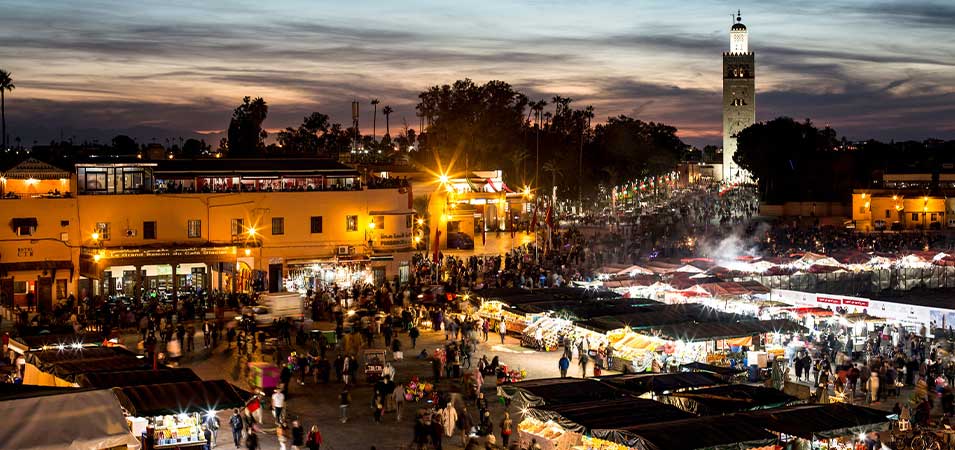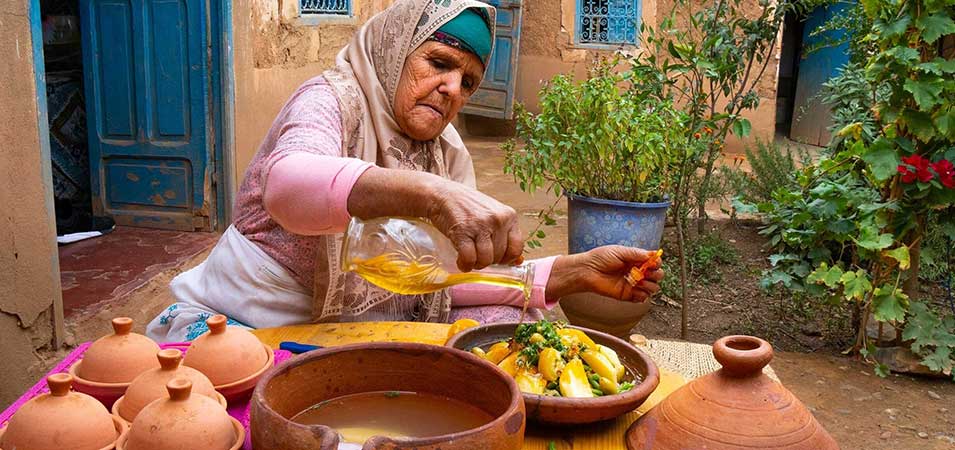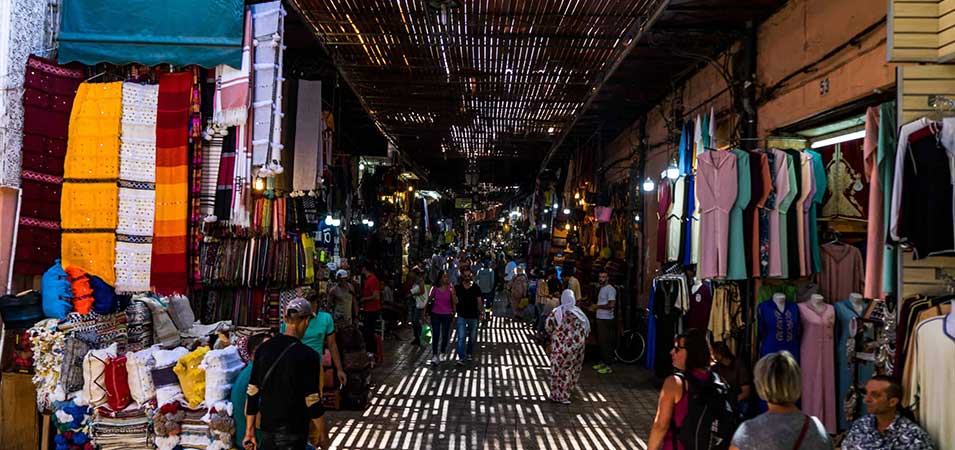Morocco, a North African country known for its rich history, vibrant culture, and stunning landscapes, is a popular destination for travelers worldwide. Among its many cities, Marrakech is a fascinating place to explore. In this article, we will delve into some fascinating facts about Morocco’s cities, focusing on the magical city of Marrakech. Whether planning a trip to Morocco or simply curious about this beautiful country, read on to discover the allure of Morocco’s cities and gain insights into navigating Marrakech like a seasoned traveler.
Morocco offers a delightful blend of ancient traditions and modern allure in the northwest corner of Africa. Its cities are a testament to the rich history and diverse cultural influences that have shaped the nation over centuries. One such city that encapsulates the essence of Morocco is Marrakech.
Morocco Cities: A Tapestry of Culture and History
Marrakech: Jewel of the South
Marrakech, often referred to as the “Red City” due to the color of its buildings, is a city that transports visitors back in time. The bustling streets of the Medina, the old quarter of the town, are a maze of narrow alleyways, vibrant markets, and architectural wonders. From the iconic Koutoubia Mosque to the enchanting Jemaa el-Fnaa square, Marrakech is a sensory feast that captivates travelers with its colors, scents, and sounds.
Fes: The Ancient Imperial City
Fes, Morocco’s spiritual and intellectual capital, is a city steeped in history and heritage. Its Medina, a UNESCO World Heritage Site, is home to the oldest university in the world, Al-Qarawiyyin University. Fes is renowned for its intricate craftsmanship, particularly in producing leather goods and traditional ceramics. Exploring the narrow lanes of the Medina is like stepping into a bygone era, where centuries-old traditions continue to thrive.
Tangier: Gateway to Africa and Europe
Situated at the northern tip of Morocco, Tangier has long been a melting pot of cultures and civilizations. Its strategic location has made it a gateway between Africa and Europe, attracting artists, writers, and musicians worldwide. Tangier’s vibrant art scene, stunning coastline, and vibrant markets make it a captivating city worth exploring.
Casablanca: The Economic Hub
As Morocco’s largest city and economic center, Casablanca is a modern metropolis with a cosmopolitan vibe. It is known for its impressive architecture, including the awe-inspiring Hassan II Mosque, one of the largest mosques in the world. Casablanca offers a unique blend of traditional Moroccan charm and contemporary urban lifestyle, making it a dynamic destination for business and leisure travelers.
Exploring Marrakech: A Traveler’s Delight
The Medina: A Bustling UNESCO World Heritage Site
The Medina of Marrakech is a UNESCO World Heritage Site and a must-visit for any traveler. Lose yourself in the labyrinthine streets, where artisans, spice merchants, and street performers create a lively and immersive atmosphere. The Medina is home to stunning palaces, historic mosques, and traditional riads, offering a glimpse into the rich architectural heritage of Morocco.
Majorelle Garden: A Botanical Oasis
Escape the hustle and bustle of the city by visiting the Majorelle Garden, a serene oasis nestled within Marrakech. Created by French painter Jacques Majorelle, the garden is a masterpiece of botanical design, featuring exotic plants, vibrant blue buildings, and soothing fountains. It is also home to the Berber Museum, showcasing the rich cultural heritage of the indigenous Berber people.
Koutoubia Mosque: A Landmark of Marrakech
The Koutoubia Mosque is an iconic symbol of Marrakech and the largest mosque in the city. Its magnificent minaret dominates the skyline and can be seen from various vantage points. While non-Muslims are not allowed inside the mosque, they can admire its architectural grandeur from the outside and experience the tranquil atmosphere of the surrounding gardens.
Jemaa el-Fnaa: The Vibrant Heart of the City
Jemaa el-Fnaa is the pulsating heart of Marrakech, a lively square that comes alive with street performers, food stalls, and traditional storytellers as the sun sets. Immerse yourself in the sensory delights of this vibrant gathering place, where the aroma of spices mingles with the sounds of music and the rich colors of Moroccan crafts entice passersby.
Saadian Tombs: A Glimpse into the Past
Discover the hidden treasure of the Saadian Tombs, a burial ground dating back to the 16th century. These intricately decorated tombs were rediscovered in 1917, showcasing exquisite craftsmanship and intricate tilework. Visiting the Saadian Tombs offers a unique opportunity to delve into Morocco’s historical past and appreciate the artistry of the era.
Experiencing Moroccan Cuisine: A Gastronomic Adventure
Morocco’s food is a feast for the senses, blending flavors from Arabic, Berber, and Mediterranean culinary traditions. Here are some must-try dishes:
Tagine: A Flavorful Traditional Dish
Tagine is a quintessential Moroccan dish cooked in a conical clay pot of the same name. It is a slow-cooked stew made with various ingredients, such as meat, vegetables, and aromatic spices. The long cooking process allows the flavors to meld together, resulting in a tender and aromatic dish best enjoyed with freshly baked Moroccan bread.
Mint Tea: The National Drink
Every visit to Morocco is complete with sipping on a cup of traditional mint tea. This sweet, refreshing drink symbolizes Moroccan hospitality and is typically served in small glasses. The tea is brewed with green and fresh mint leaves, creating a soothing and aromatic beverage enjoyed throughout the day.
Pastilla: A Savory and Sweet Delight
Pastilla, or Bastilla, is a unique Moroccan dish combining sweet and savory flavors. It is a flaky pastry filled with a mixture of shredded chicken or pigeon, almonds, eggs, and a blend of spices such as cinnamon and saffron. The pastilla is traditionally dusted with powdered sugar and cinnamon, creating a delightful contrast of flavors.
Harira: A Hearty Soup for the Soul
Harira is a traditional Moroccan soup often enjoyed during the holy month of Ramadan. It is a hearty and nourishing soup made with a base of tomatoes, lentils, chickpeas, and lamb or beef. Harira is spiced with a blend of aromatic spices and herbs, and it is often served with dates and traditional bread, making it a satisfying meal.
Moroccan Souks: A Shopper’s Paradise
No visit to Morocco would be complete without experiencing the vibrant and bustling souks or markets. These lively marketplaces offer a treasure trove of goods, from intricate textiles and vibrant ceramics to exotic spices and handcrafted leather products. Here are a few notable souks to explore:
Souk Submarine: A Labyrinth of Goods
Located in the heart of Marrakech’s Medina, Souk Semmarine is a bustling market where locals and tourists gather to haggle for various goods. From colorful rugs and leather goods to traditional clothing and jewelry, this vibrant souk offers a glimpse into Morocco’s rich craftsmanship and artistic heritage.
Souk el Attarine: A Treasure Trove of Spices
If you’re a food enthusiast or curious about Moroccan spices, visiting Souk el Attarine is a must. This aromatic market contains various spices, dried fruits, and nuts. As you stroll through the stalls, the air is filled with the intoxicating scents of cumin, cinnamon, saffron, and other exotic spices that form the backbone of Moroccan cuisine.
Souk des Teinturiers: A Haven for Textiles
The Souk des Teinturiers in Marrakech is a paradise for those interested in textiles and fabrics. This vibrant market is known for its colorful display of handwoven rugs, tapestries, and traditional clothing. Watch skilled artisans at work, dyeing and weaving intricate patterns, or immerse yourself in the kaleidoscope of colors as you browse through the various stalls.
Morocco’s Festivals and Celebrations
Morocco is a country that loves to celebrate its vibrant culture and traditions through various festivals and events. Here are a few special celebrations:
Marrakech Popular Arts Festival: Showcasing Local Artistry
The Marrakech Popular Arts Festival, held annually, celebrates Morocco’s rich cultural heritage. The festival showcases traditional music, dance, and art forms, providing a platform for local artists to showcase their talent. Visitors can immerse themselves in the vibrant atmosphere, witness captivating performances, and better understand Morocco’s artistic traditions.
Eid al-Fitr: Celebrating the End of Ramadan
Eid al-Fitr, also known as the “Festival of Breaking the Fast,” is one of Morocco’s most important religious festivals. It marks the end of Ramadan, the holy month of fasting for Muslims. During Eid al-Fitr, families come together to celebrate with feasts, prayers, and exchange of gifts. The streets come alive with joyful festivities, and it is a beautiful time to experience Moroccan hospitality and the spirit of togetherness.
Gnaoua World Music Festival: A Fusion of Sounds
The Gnaoua World Music Festival, held annually in Essaouira, showcases the rich musical heritage of Morocco and the world. Gnaoua music is a unique blend of African, Arab, and Berber rhythms, and the festival brings together renowned musicians from different countries to create a fusion of sounds. This vibrant event attracts music lovers from around the globe and offers a one-of-a-kind cultural experience.
FAQs (Frequently Asked Questions)
Is Morocco a safe country for travelers?
Morocco is generally considered a safe country for travelers. However, taking standard precautions and being aware of your surroundings is always important, especially in crowded areas or tourist hotspots.
What is the best time to visit Morocco?
The best time to visit Morocco is spring (March to May) or fall (September to November) when the weather is pleasant and mild. Summers can be hot, especially in desert regions, while winter can be chilly in mountainous areas.
Do I need a visa to visit Morocco?
The visa requirements for Morocco vary depending on your nationality. Some countries have visa-free access for a certain period, while others require a visa. It’s advisable to check the visa requirements before your trip.
What is the currency used in Morocco?
The official currency of Morocco is the Moroccan dirham (MAD). Carrying some cash is recommended, as credit cards may not be accepted in smaller establishments or markets.
What are some popular day trips from Marrakech?
Marrakech serves as a gateway to many exciting day trip destinations. Some popular options include exploring the Atlas Mountains, visiting the coastal town of Essaouira, or venturing into the Sahara Desert for a camel trek and overnight stay in a desert camp.
Conclusion
Morocco’s cities are a tapestry of culture, history, and natural beauty. From the enchanting streets of Marrakech to the bustling markets of Fes and the cosmopolitan charm of Casablanca, each city offers a unique experience for travelers. Exploring Morocco’s cities allows you to immerse yourself in the vibrant traditions, savor the tantalizing flavors of Moroccan cuisine, and witness the warmth and hospitality of its people. So pack your bags, embark on an adventure, and discover the captivating allure of Morocco’s cities.





